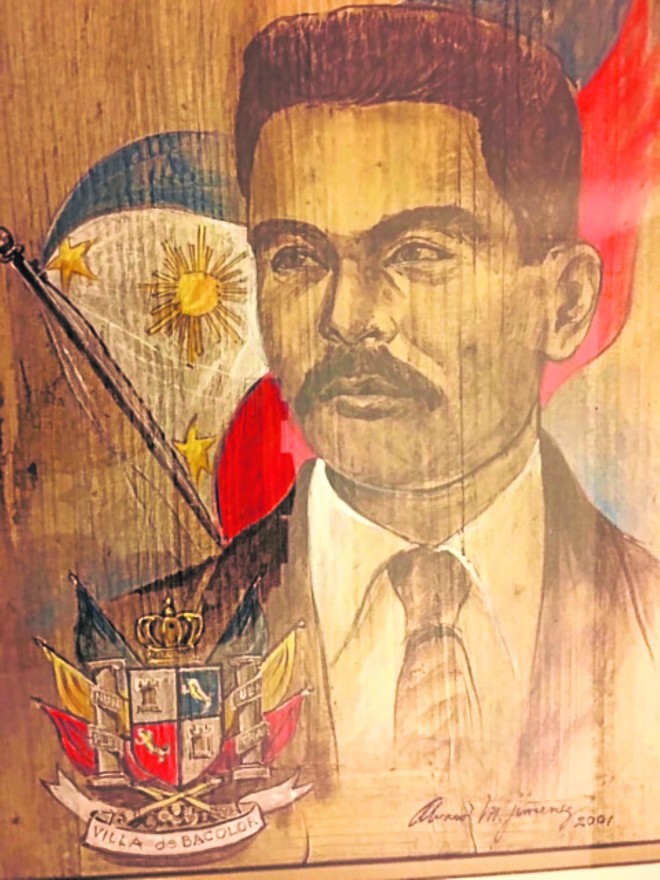
Angeles City—What gift is fitting to celebrate the courage and resiliency of the people of Bacolor, the once lahar-ravaged Pampanga town?
They have not surrendered to Mt. Pinatubo’s 1991 eruptions and series of lahar flows that buried their town, killed their kin, destroyed their homes and farms, put them at the mercy of others, dispersed them to eight resettlement areas, and diminished their sense of community.
Descendants of revolutionary and writer Juan Crisostomo Soto (Crissot) are taking the cue from their patriarch.
At the height of the Philippine revolution against Spain, which led to the burning of Bacolor on June 4, 1898, Crissot likened the conflagration to a “fenix nung matua na ya/Subli yang anac qng abu na ya (the Phoenix when it grows old/is reborn from its own ashes).”
Artistic rebirth
So, the heirs have returned to Crissot’s beloved Baculud (the name older folk gave this former provincial capital), with their gift—Crissot’s zarzuela “Alang Dios!” (There is no God!).
“It was in this heightened sense of cultural and artistic rebirth, along with the tragic loss of Bacolor from Mt. Pinatubo, that our thirst for Kapampangan arts, culture, literature and history is once more revisited,” wrote Joy Soto Walton.
Her father, Efraim, and his cousins founded the Sapni nang (Heirs of) Crissot Cultural and Literary Foundation in 1997.
Sapni’s double CD of old Kapampangan songs, as well as soundtracks of “Alang Dios!,” were recorded and distributed in 2000, sparking a cultural heritage revival, said Robby Tantingco, executive director of the Center for Kapampangan Studies of the Holy Angel University (HAU).
The free showing of “Alang Dios!” on Jan. 27 at Don Honorio Ventura Technological State University in Bacolor, directed by RJ Soto, was the play’s fourth restaging in 116 years. That date is in time with the 150th birth anniversary of Crissot.
The zarzuela returns to the stage on Feb. 9, 10 and 11 at the HAU Theater in Angeles City.
Household name
Tantingco said the restaging of “Alang Dios!” may fuel the production of more vernacular plays.
Written in 1901, the zarzuela premiered at the town’s defunct Teatro Sabina on Nov. 16, 1902. It played to a large crowd on March 6, 1954, at Bacolor Elementary School.
On May 31, 1975, it was performed at Don Bosco Academy Bacolor campus, and by night, at the Cultural Center of the Philippines. Former Justice Minister Estelito Mendoza asked the military to escort the cast and crew back to Bacolor so they would not be arrested for breaking the martial law curfew.
“‘Alang Dios!’ was so popular that it had become a household name. People mastered the plot, its twist, the characters, the lines, songs and scenes. Also, three generations of local artists, including those from our clans, were part of the cast,” Walton said.
Freedom
Crissot’s life and works are documented in Juan S. Aguas’ book “Juan Crisostomo Soto and the Pampangan Drama” (University of the Philippines, 1963; revised 2015). Crissot joined the Voluntarios Mobilizados and placed himself under the command of Gen. Tomas Mascardo when the war against the United States broke out.
Jailed and scheduled for execution for refusing to reveal the whereabouts of Gen. Emilio Aguinaldo, Crissot earned back his freedom by releasing an American officer and three soldiers held in Porac town.
Aside from his prolific literary output (49 plays, one novel, over 100 poems, dozens of short stories and essays), he also wrote for La Independencia (the newspaper of the revolution), edited Ing Balen (El Pueblo), later Ing Emangabiran (El Imparcial). He founded the weekly Ing Alipatpat (The Firefly).
Crissot and his contemporaries made Bacolor the “Athens of Pampanga” as they ushered what had been called the “Golden Age of Kapampangan Literature” in the first quarter of the 20th century.
Forced marriage
Working on the theme of forced marriages, “Alang Dios!” consists of three acts, 13 settings and 81 scenes set in the village of Parulog.
It tells the tale of Maria Luz Generosa who is forced by her cruel stepmother Doña Cucang to marry the landed Ramon. But her real love remains Enrique, who is wrongly jailed for stealing a diamond cross.
Aguas said, “Not one Pampanga writer has yet disputed the honor that belongs to [Crissot]—that of successfully depicting on stage his people’s fears, sorrows, joys and idiosyncrasies.”










































